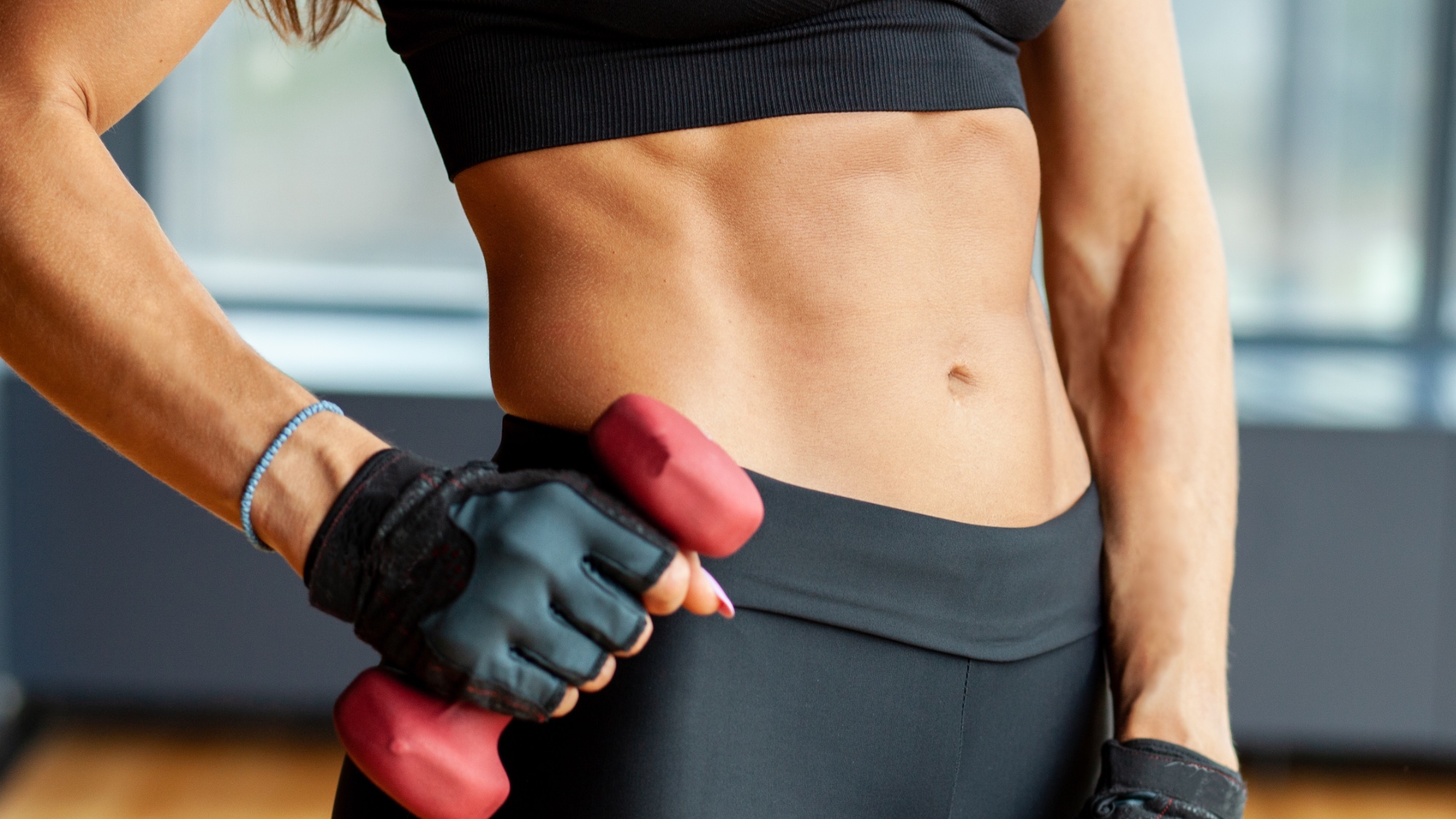No more crunches! Build a strong, stable core with these 5 standing ab exercises

If you’re looking to build a strong and stable midsection, I’ve got good news — you don’t need to spend hours in the gym lifting weights to get results. In fact, you can work on your abs from home, using just a dumbbell and this standing workout.
Forget endless sit-ups and planks, as the name suggests, you’ll remain standing for the entirety of this workout — great if you’re short on space, taking your workout outside, or struggle to get down on the floor.
Far from being an easy alternative, standing ab workouts give your core an extra challenge, as you have to work against gravity to keep your torso upright as you move.
Ready to get started? All you’ll need is 15 minutes and a set of the best adjustable dumbbells. As a reminder, if you’re a complete beginner or you’re returning to exercise following a pregnancy or injury, it’s always a good idea to consult a personal trainer before taking on a new workout regimen.
What is the workout?
The workout has been programmed by trainer Britany Williams, who shows you each of the exercises with perfect form. There are seven exercises in total, but Williams says to choose five to build a rock-solid standing ab workout.
As mentioned above, you’ll need a set of weights. Remember that the right weight for you and your body will feel challenging, but not impossible, by the final few reps. If at any point you think your form is being compromised, it’s best to drop to a lower weight or just work with your bodyweight.
You’ll do each of the exercises for 30 seconds on each side, then repeat the circuit twice or three times, taking a 30-60 second break between each circuit. If you wish, you can complete all seven exercises and repeat the circuit twice.
Get instant access to breaking news, the hottest reviews, great deals and helpful tips.
A post shared by Britany Williams (@britanywilliams)
A photo posted by on
Here’s the exercises involved:
- Dumbbell squat to overhead reach, with knee drive twist: To do this exercise, start by standing on your exercise mat with your feet slightly wider than hip-width apart. Holding a dumbbell in each hand, squat down, lowering your dumbbells to the ground. As you push your legs back to your starting position, raise both arms and reach them overhead. From here, lower the weights to your chest, and rotate your torso to the left, as you lift your right knee to meet your elbow. Then immediately crunch on the opposite side, before lowering down into your next squat.
- Single-leg criss cross: Start by holding a dumbbell in each hand in an underhand grip. Bend your knee and hover your leg off the ground, balancing on the other leg. From here, take the dumbbells out to your side, then bring them in towards your body, crisscrossing them each time. After 30 seconds, switch the leg you’re standing on.
- Front to overhead hold march: For this exercise, hold a dumbbell in both hands, with your arms extended away from you in front of your torso. From here, engage your core, and march one leg, then the other, bending your knee and bringing it up towards your torso. Once you’ve completed a rep on each leg, raise the dumbbell above your head with your arms extended and march again.
- Standing woodchop: Start with your feet shoulder-width apart, and hold the dumbbell in both hands to the left side of your body. Engage your abs, and lift and rotate the dumbbell above your right shoulder. As you lift, pivot your left foot so that your torso helps the elevation. Moving with control, lower the dumbbell back to your starting position, keeping your core engaged — there should be minimal movement from the trunk during this exercise. Repeat on the right side.
- Windmill: Pick up the dumbbell with your left arm and raise it into the air, letting the bell rest on top of your left wrist and keeping your arm straight. Ensure that your left shoulder is rolled back and your lats are engaged. Turn both of your feet to the right at a 45-degree angle. Look up at the dumbbell above you, and keep your focus on the weight for the entirety of the movement. Engage your core and shift your left hip behind you, allowing your right knee to bend slightly. Rotate your right arm from the shoulder, placing your knuckles against the inner thigh of your right leg. Slide your right arm along the inner thigh, reaching your fingertips towards the floor. Once you’ve reached the end of your range, lift back up to the starting position with control.
- Sumo squat twist crunch: This exercise uses just your bodyweight. Start by standing with your feet wider than hip-width apart, and your feet pointing outwards. Place your hands on either side of your head, fingertips resting on your temples, elbows out to the side. Engage your core and squat down into a sumo squat. As you rise back to your starting position, raise your left knee up towards your torso, at the same time, twist your right elbow to touch your left knee. Next rep, raise your right knee, and tap with your left elbow. Keep switching sides.
- Offset squat to overhead lunge: For this exercise, start by standing with your feet slightly wider than hip-width apart, with a dumbbell in your left hand. Raise the dumbbell to your shoulder, and complete an offset squat (as only one side is weighted). As you push through your feet and return to your starting position, raise the dumbbell over your head, so your arm is extended to the ceiling, and step your left leg back to complete a lunge.
What are the benefits?

All of the compound exercises above work far more than just your core, but when done with good form, your mid-section will be getting stronger throughout this workout.
There is one important caveat, though. As Williams points out in her Instagram caption, “all the core workouts in the world won’t get you a stronger core if you’re not engaging it properly.” Remember for all the exercises above, it’s essential to really engage your core — think about sucking your belly button into your spine as you move, bracing your mid-section to ensure it’s working.
Developing a strong and stable core is essential, whether you’re a runner, a tennis player, or a CrossFit fanatic. What’s more, a strong core can help you walk, sit, and stand with better posture and help prevent back injuries.
If building a six-pack is your goal, you’ll need to pair exercises like this with a good diet and enough cardio to ensure you’ve got a low body fat percentage — here’s how to calculate your body fat percentage, and why it matters.
Either way, remember that lying on your exercise mat and doing endless crunches isn’t the way to build muscle in your midsection. Give these standing exercises a go, and reap the benefits.
More from Tom's Guide
- I swapped running for 'Jeffing' for a week — and now I'm hooked
- I tried the 5-4-5 walking technique for a week — and it boosted my fitness and mood
- How to lose weight and get in shape by walking

Jane McGuire is Tom's Guide's Fitness editor, which means she looks after everything fitness related - from running gear to yoga mats. An avid runner, Jane has tested and reviewed fitness products for the past five years, so knows what to look for when finding a good running watch or a pair of shorts with pockets big enough for your smartphone. When she's not pounding the pavements, you'll find Jane striding round the Surrey Hills, taking far too many photos of her puppy.
You must confirm your public display name before commenting
Please logout and then login again, you will then be prompted to enter your display name.
